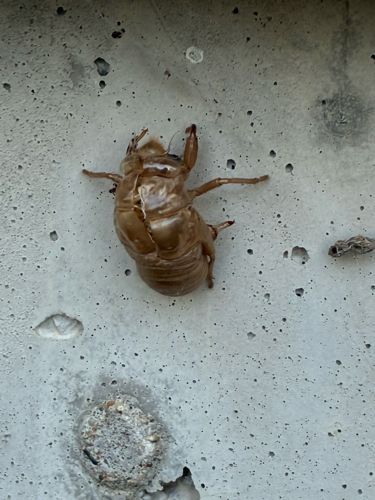Cicada Exuvia (Shed Exoskeleton)
Scientific Name: Various species within the family Cicadidae
Order & Family: Hemiptera, Cicadidae
Size: The exuvia can range from approximately 2 to 5 cm (0.8 to 2 inches) in length, depending on the cicada species.

Natural Habitat
Cicada nymphs live underground, feeding on tree roots. The exuvia, or shed skin, is typically found clinging to tree trunks, branches, fences, or other vertical surfaces near the ground after the nymph emerges for its final molt into an adult.
Diet & Feeding
This is a shed exoskeleton, so it does not have a diet. The cicada nymph (the stage that shed this skin) feeds on xylem sap from tree roots, while adult cicadas feed on xylem sap from twigs and branches.
Behavior Patterns
This image shows the exuvia, which is the result of the molting process of a cicada nymph. Cicada nymphs spend most of their lives underground (from 2 to 17 years depending on the species). When ready to molt into adults, they emerge from the ground, climb onto a suitable surface, anchor themselves, and then split their nymphal exoskeleton down the back. The adult cicada then wriggles free, leaving the empty shell behind.
Risks & Benefits
The exuvia itself poses no risks and offers no direct benefits other than being an indicator of cicada presence. Cicadas as a whole are generally harmless to humans. They rarely bite or sting. Large outbreaks of cicadas can cause some cosmetic damage to young trees from egg-laying incisions, but typically do not kill mature trees. Ecologically, cicadas are a food source for many animals and their tunneling can help aerate soil.
Identified on: 9/10/2025